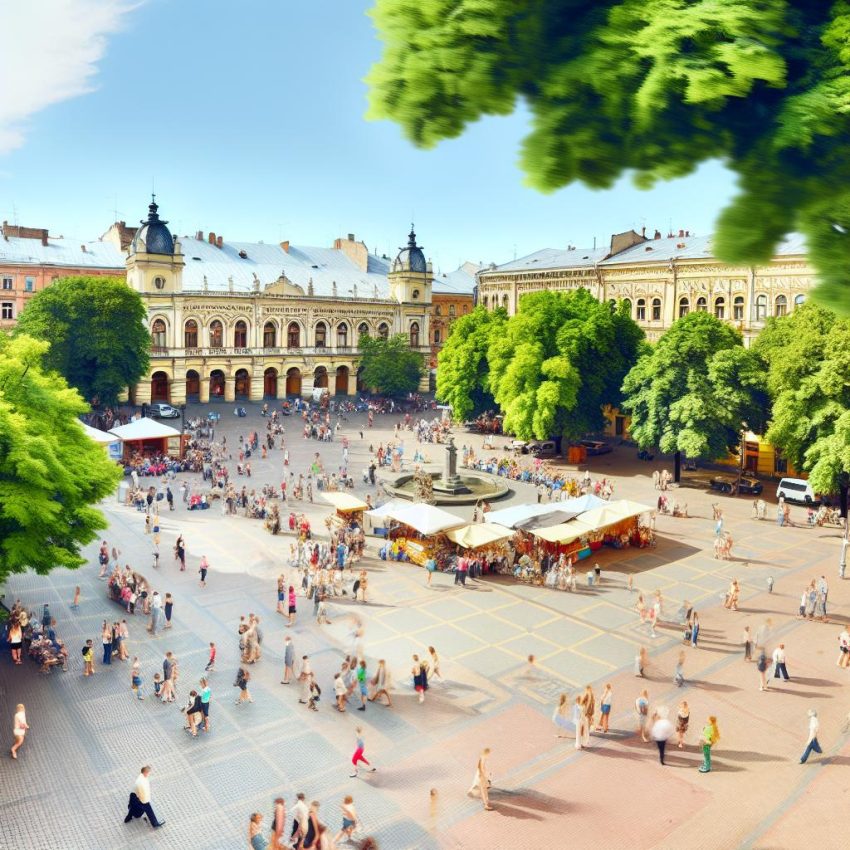Overview of Plaza de Mayo
Located in Buenos Aires, Argentina, the Plaza de Mayo serves as a historically and politically significant public square. Established during the 16th century, it quickly became a pivotal site for major political events in the city. The plaza’s significance lies not only in its history but also in its central location amidst some of the country’s most prominent structures, including the Casa Rosada, the official office of the President of Argentina. Additionally, the Metropolitan Cathedral and the Cabildo contribute to the area’s importance as centers of governmental and religious authority.
Historical Significance
Plaza de Mayo holds immense historical importance as it has been the site of numerous critical events in Argentine history. One of these landmark events includes the May Revolution of 1810, a significant moment that eventually led to Argentina’s independence from Spanish colonial rule. The square was named to honor this revolutionary period, marking a significant turning point in Argentine history.
Through its long history, Plaza de Mayo has seen numerous transformations reflective of the broader changes in Argentine society and governance. Its influence extends beyond its physical space and into the consciousness of the nation’s identity. The square’s ability to serve as a locus of protest and celebration is an enduring testament to its role in capturing the spirit and evolution of Argentina.
Political Demonstrations
Plaza de Mayo is perhaps best known for its longstanding tradition as a gathering place for political demonstrations and public meetings. Throughout its history, it has witnessed countless gatherings and has become synonymous with political activism. Among its most notable associations is with the Mothers of the Plaza de Mayo, a prominent human rights organization that emerged in response to the forced disappearances during Argentina’s Dirty War era. These women began their peaceful protests in the plaza, seeking answers for the whereabouts of their children—a demonstration of anguish that has continued for decades. Their ongoing visibility and courage have solidified the plaza’s role as a powerful symbol of activism and resilience.
Beyond the Mothers, the plaza has hosted numerous political events that encompass a variety of causes, ranging from labor protests to celebrations of democracy. It frequently draws citizens who wish to make their voices heard, emphasizing its role as a critical public space where societal issues are actively addressed.
Architectural Features
The architectural features surrounding the Plaza de Mayo are aligned with its historical and cultural significance. Perhaps the best known is the Casa Rosada, the executive mansion and office of the Argentine President. Its distinctive pink façade makes it one of the nation’s most recognized landmarks. Various interpretations exist regarding its color, from being a blend of the red and white colors of opposing political factions to being a traditional colonial defense against moisture using cow’s blood.
Another important structure is the Cabildo, a historical building serving as a museum today. It stands as a witness to many significant events, including the early meetings preceding the May Revolution. Housing artifacts from the colonial era, the Cabildo allows visitors to step back into the past and understand the roots of contemporary Argentina.
Additionally, the Metropolitan Cathedral is a prominent feature on the plaza. It functions both as a place of worship and as a site of historical reverence, containing the tomb of General José de San Martín, a revered leader in Argentina’s struggle for independence. His resting place within the cathedral signifies the integration of history, religion, and national pride.
Current Role and Importance
In contemporary times, Plaza de Mayo continues to serve as a vital center for public discourse and cultural events in Buenos Aires. Its location and historical resonance make it a popular tourist destination, attracting numerous visitors who are eager to immerse themselves in its rich history and experience its vibrant present. Those interested in visiting the plaza can find additional information and resources through the Buenos Aires tourism office or local cultural organizations that frequently host events and tours.
Importantly, the Plaza de Mayo remains a place where history, politics, and culture intersect. It provides a window into the past while continuing to influence the present and future trajectory of Argentina. Its ability to function as both a symbolic space for reflection and an active platform for current affairs underscores its dynamic role within the Argentine societal fabric.
In summary, the significance of Plaza de Mayo is multi-layered, encompassing historical events, political activism, and architectural beauty. It is a living testimony to the complex social and political narratives that have shaped Argentina. Its enduring relevance comes not only from the physical space it occupies but from the enduring spirit of activism and public engagement that it embodies.

